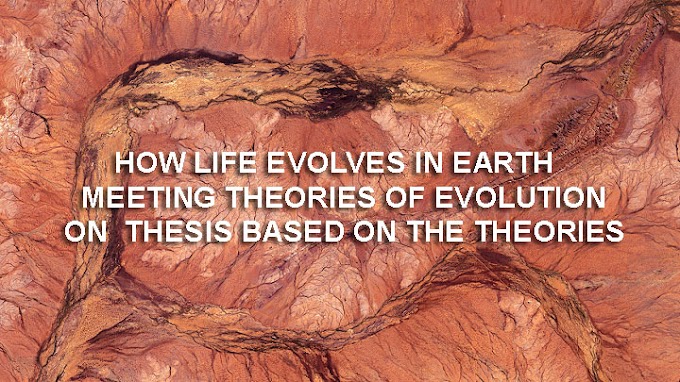Ancient Indian Scientist And Scientific Institutions
We have already studied that India is always counted as one of the most ancient and advanced country in the field of science. Foreign scholars use to come in India to study in Indian scientific institutions by Indian scientists. Some Indian institutions and scientists are described here.:-Scientific Institutions
:-Taxila
Taxila (Takshashila) is in western Punjab, and was an important city during Alexander's compaign in India. From 600 B.C.-5th century, Takshashila was an important Vedic/Hindu and Buddhist centre of learning. Even today, it is archaeological site (now in Pakistan) containing the ruins of Gandharan city of Takshashila. In 1980, Taxila was declared a UNESCO world heritagesite with multiple locations. The word Takshashila means "belonging to the king Taksha". Taksha was son of Bharata and Mandavi, character who appear in the Indian epic Ramayana. Chandragupta Maurya's advisor Kautilya was a teacher at taxila. During the reign of Chandragupta's grandson Ashoka Taxila became a great Buddhist centre of learning. Taxila had been variously a capital for many dynasties, and a centre of Vedic and Buddhist with a population of Buddhist, classical Hindu, and possibly Greeks that may have endured for century's. The famous treatise Arthashashtra by Kautilya is said to have been composed in Takshashila itself. Kautilya the Maurya emperor Chandragupta and the Ayurvedic healer Charaka studied at Taxila. Generally, a study he entered Takshashila at the age of sixteen. The Vedas and the eighteen arts, which included skills as archery, hunting, and elephant lore, were taught, in addition on it's medical school, and school of military science.:-Nalanda University
Nalanda University was one amongst the earliest Universities within the world based within the fifth century. know additional concerning Nalanda University history and its brilliant library through pictures of the ancient ruins of this University.The Ancient university of Nalanda is believed to be founded by the Gupta dynasty who were ruling at the elements of contemporary india, Pakistan, Nepal, and bangladesh. If we glance at the Gupta Empire dynasty, Nalanda University was based around the kingdom of ChandraGupta one or SamudraGupta. In its middle section of life, Nalanda university was supported by the Buddhist emperors and later within the last section, by the Pala kings who dominated mostly the south and eastern a part of india.
:-Scientists
:-Kanad
Kanada (कणाद), people also know him as Kashyapa, Uluka, Kananda and Kanabhuk, was Indian sage and thinker who had founded the Vaisheshika faculty of indian scientist.Acharya Kanad was born around 600 B.C. or 800 B.C. in Prabhas Kshetra that is found close to Dwaraka in present day Gujarat, India. His actual name was Kashyap and the son of a thinker 'Ulka'.
Since childhood, Kashyap displayed a keen sense of detail and was fascinated by the foremost minute things. once he was a young boy, he once attended his father on a pilgrimage to Prayaga. He noticed thousands of pilgrims within the village were littering the roads with the flowers and grains of rice they offered at the temples by the shore of the stream ganga.
The tiny particles attracted Kashyap’s attention and he began to gather the grains of rice from the bottom whereas everyone else busied themselves with providing prayers or bathing within the river. the crowd eventually detected his peculiar behavior and puzzled why he was therefore fascinated with the grains of rice.
When they asked him regarding it, Kashyap replied that although one grain of rice could appear paltry on its own, a group of many them may structure a person’s meal. This meant a group of meals may feed a family and ultimately, mankind. For this reason alone, he believed that one grain of rice was even as vital as all the material resource within the world.
After this incident, individuals started calling him “Kanad,” as “Kan” in Sanskritic language suggests that “the smallest particle.”
Kanad pursued his interest with the unseen world and dedicated his life to conceptualizing the idea of the smallest particle. He wrote down his views and eventually passed on his knowledge to others. People began to call him “Acharya” or “the teacher,” hence the name Acharya Kanad – which means “the teacher of small particles.”
-Kanad’s Concept of “अणु” (Atom)
Acharya Kanad is believed by several to be the primary to own realized the concept of AN indestructible particle of matter.The theory occurred to Kanad while he was walking with food in his hand and he was breaking it into little pieces. He nibbled at the food in his hand till he was not able to break it down into smaller pieces. it had been then that he accomplished that he couldn't divide the food into further elements and conceptualized the thought of a particle that might not be divided any longer. He referred to as that indiscrete particle “परमाणु,” or “अणु,” which accurately means atom.
Acharya Kanad thought of the atom as minute objects that are invisible to the naked eye, and regarded it indestructible and therefore, eternal. He conjointly theorized that a Parmanu has an inherent urge to mix with another Parmanu. He conjointly explained that combining 2 Anu belonging to an equivalent class would produce a “Dwinuka” or a binary molecule. This binary molecule would contain similar properties to the two original Parmanu it absolutely was manufactured from.
:- Charak
Charaka was Born about 300BC, Acharya Charak was one of the principal contributors to the ancient art and science of ayurveda, a system of medication and lifestyle developed in Ancient india. Acharya Charak has been crowned as the Father of medicine. His famed work, the “Charak Samhita“, is taken into account as an encyclopedia of ayurveda. { [His principles, diagoneses, and cures retain their efficiency and truth even when one or two of millennia. once the science of anatomy was confused with totally different theories in Europe, Acharya Charak disclosed through his innate genius and enquiries the facts on human anatomy, embryology, pharmacology, blood circulation and diseases like polygenic disease, T.B., cardiovascular disease, etc.:-Sushrut
Sushruta is considered as the of "Father of plastic surgery." He lived in india about thousand and 800 BC, and is responsible for the advancement of medicine in ancient india. He teaches anatomy, pathophysiology, and therapeutic methods were of incomparable luminance, particularly considering his time within the historical record.He is notably famous for nasal reconstruction, which might be traced throughout the literature from his depiction within the vedic period of Hindu medicine to the age of Tagliacozzi throughout Renaissance Italy to contemporary surgical practices.
The primary focus of this historical review is targeted on Sushruta's anatomical and surgical knowledge and his creation of the cheek flap for nasal reconstruction and its transition to the "Indian methodology." The authoritative nature of the Sushruta samhita, the compendium documenting Sushruta's theories regarding medicine, is supported not solely by anatomical knowledge and surgical procedural descriptions contained within its pages, however by the artistic approaches that also hold true today.
:-Nagarjuna
Nagarjuna is widely known as the one of the most important Mahayana thinker. Along with his disciple Āryadeva, he is considered to be the founder of the Madhyamaka school of Mahāyāna Buddhism. Nagarjuna is also credited with developing the philosophy of the Prajñāpāramitā sūtras and, in some sources, with having revealed these scriptures in the world, having recovered them from the nāgas. Furthermore, he is traditionally supposed to have written several treatises on rasayana as well as serving a term as the head of Nalanda.Nagarjuna is widely thought of one among the foremost necessary Mahayana philosophers. together with his adherent Āryadeva, he's considered to be the founder of the Madhyamaka faculty of Mahāyāna Buddhism. Nagarjuna is additionally attributable with developing the philosophy of the Prajñāpāramitā sūtras and, in some sources, with having disclosed these scriptures within the world, having recovered them from the nāgas. what is more, he's historically presupposed to have written many treatises on rasayana moreover as serving a term because the head of Nalanda.
Like It, Then share it, or read MORE from SC-COMPRESSED.COM














